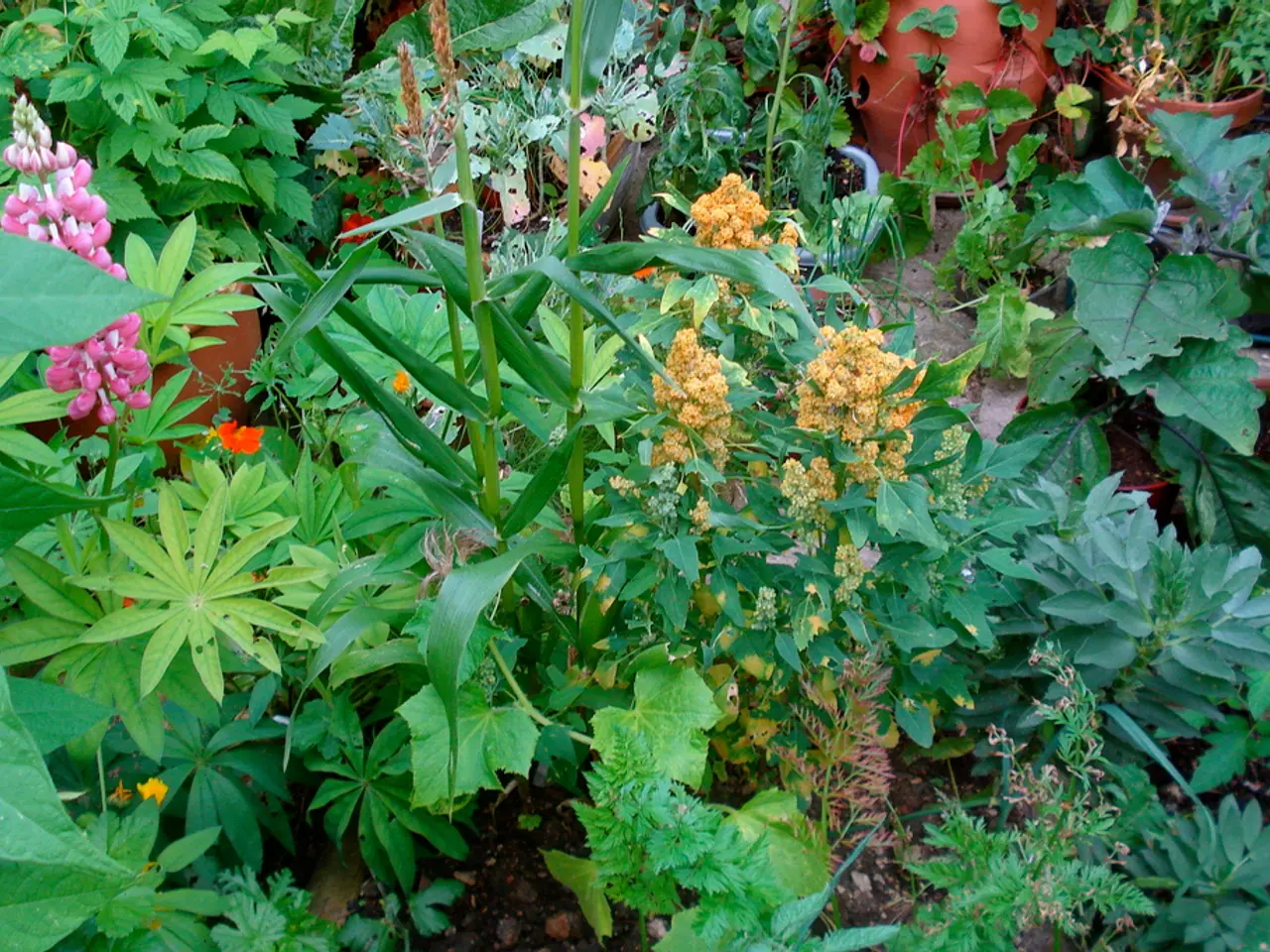Cultivating a Prosperous Garden Without Sacrificing Your Weekends' Peace
In the pursuit of a beautiful and sustainable garden, many homeowners seek guidance to create an attractive landscape with minimal ongoing effort. Fortunately, research-backed advice from Master Gardeners and university extensions provides a roadmap to low-maintenance gardening success.
At the heart of this approach lies the selection of the right plants. Opt for low-maintenance, hardy species such as native plants, drought-tolerant perennials like butterfly weed and daylilies, and plants adapted to your local climate and soil conditions. These plants require less water, fertilizer, and pest control, making them ideal for low-maintenance gardens [2][3][5].
To further reduce maintenance needs, consider planting native or regionally appropriate species. These plants support local ecosystems and are better adapted to survive with less input once established [3][5]. By mimicking natural ecosystems, plant in layers with structural plants, mid-level seasonal bloomers, and groundcovers that suppress weeds and retain soil moisture. This creates a diverse, self-sustaining garden with fewer gaps for weeds and less need for mulch or watering [3].
Group plants with similar water and light needs together for more efficient watering and care. Proper soil preparation and planting techniques are also essential for good root development and plant health, reducing stress and future care requirements [1].
Regular but minimal maintenance tasks, such as deadheading certain plants to encourage reblooming, dividing perennials when necessary, and pruning fruit trees on a schedule to maintain productivity, are also part of the low-maintenance gardening equation [1][2].
For those with limited space or soil quality, container gardening offers a low-maintenance alternative. Containers need proper potting mix, plant selection, watering, and fertilization but can be a convenient way to grow vegetables or ornamental plants [1].
When designing your garden, prioritise easy access and enjoyment to encourage regular but simple care routines. Use plants that look good with minimal grooming [4].
To avoid disrupting the ecosystem balance and increasing maintenance, avoid excessive use of fertilizers and pesticides, especially for native and drought-tolerant plants [3].
For personalised guidance, consider reaching out to your local Cooperative Extension or University staff and volunteers through services like Ask Extension. Remember to check plant compatibility with the USDA zone before starting a garden.
Raised beds are recommended for better moisture control, weed mitigation, and suitability for people with mobility issues. Soaker hoses, an alternative to drip irrigation systems, can be used for watering multiple plants. Mulching with shredded leaves, grass, straw, or wood chips can smother weeds, retain moisture, and regulate soil temperature [4]. Programmable smart timers are available for automatic watering systems, such as those recommended by the University of Georgia.
According to Aaron Steil at Iowa State University, mulching also reduces the severity of diseases on plants and reduces soil moisture evaporation [6]. An automated drip irrigation system can further reduce watering workload and prevent diseases.
Kelsey McDonough, a freelance writer and scientist, offers expert insights on topics ranging from gardening and homesteading to hydrology and climate change. She is a certified Master Gardener in Colorado and holds a Ph.D. in biological and agricultural engineering [7].
The key to a successful low-maintenance garden is to focus on plant selection, soil health, mulching, and thoughtful planting design. By following these expert-recommended tips, you can achieve a garden that requires less time and effort while still providing enjoyment and supporting local ecosystems. The best garden is one that is easily visible and can be interacted with daily, offering a low-maintenance blueprint that maximises joy and minimises effort. Perennials, for instance, are recommended for their ability to return annually without the need for replanting [8]. The Missouri Botanical Garden offers a guide to low-maintenance perennials for further inspiration.
- In a low-maintenance garden, opt for hardy plants such as native plants, perennials like butterfly weed and daylilies, and plants adapted to your local climate and soil conditions.
- To create a diverse, self-sustaining garden, plant in layers with structural plants, mid-level seasonal bloomers, and groundcovers that suppress weeds and retain soil moisture.
- Group plants with similar water and light needs together for more efficient watering and care, and choose raised beds for better moisture control, weed mitigation, and suitability for people with mobility issues.
- For low-maintenance container gardening, select the right potting mix, properly water and fertilize, and use plants that require less care.
- To maintain the health of your garden and support local ecosystems, avoid excessive use of fertilizers and pesticides, especially for native and drought-tolerant plants, and mulch with shredded leaves, grass, straw, or wood chips to help retain moisture and regulate soil temperature.




